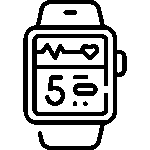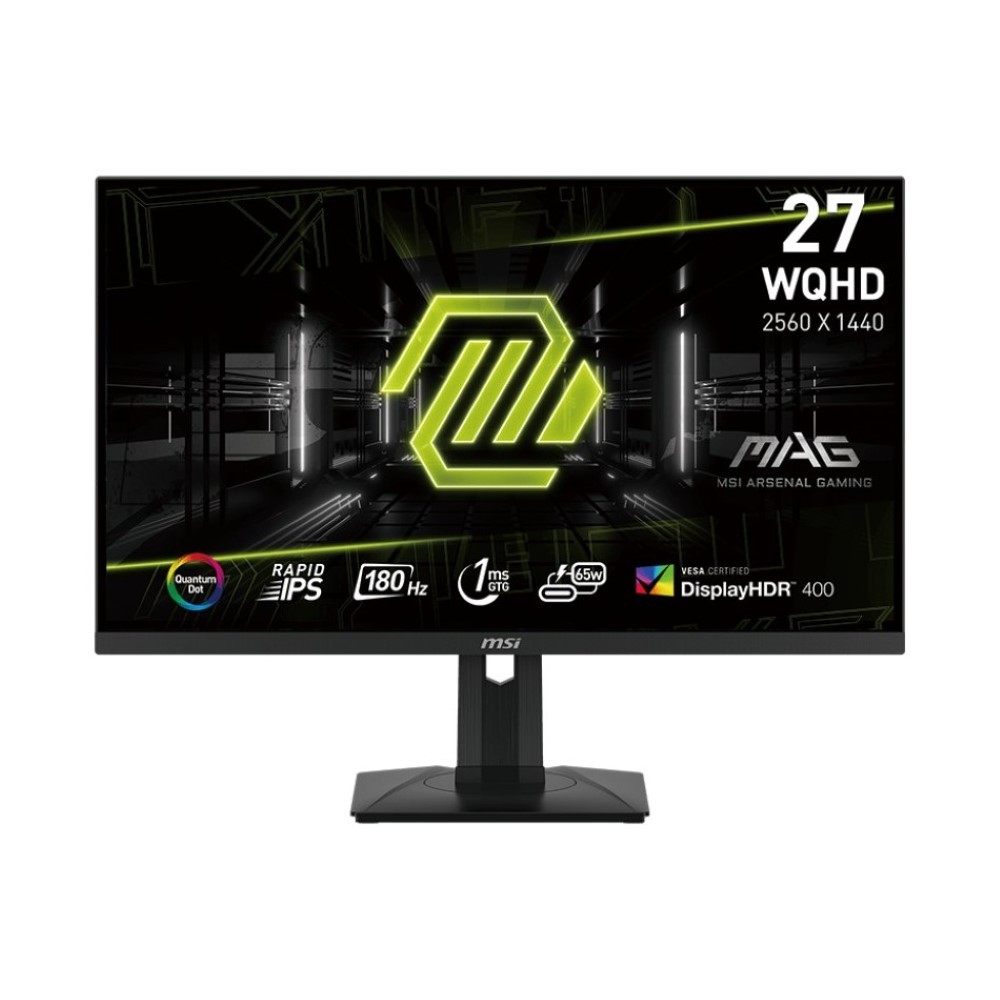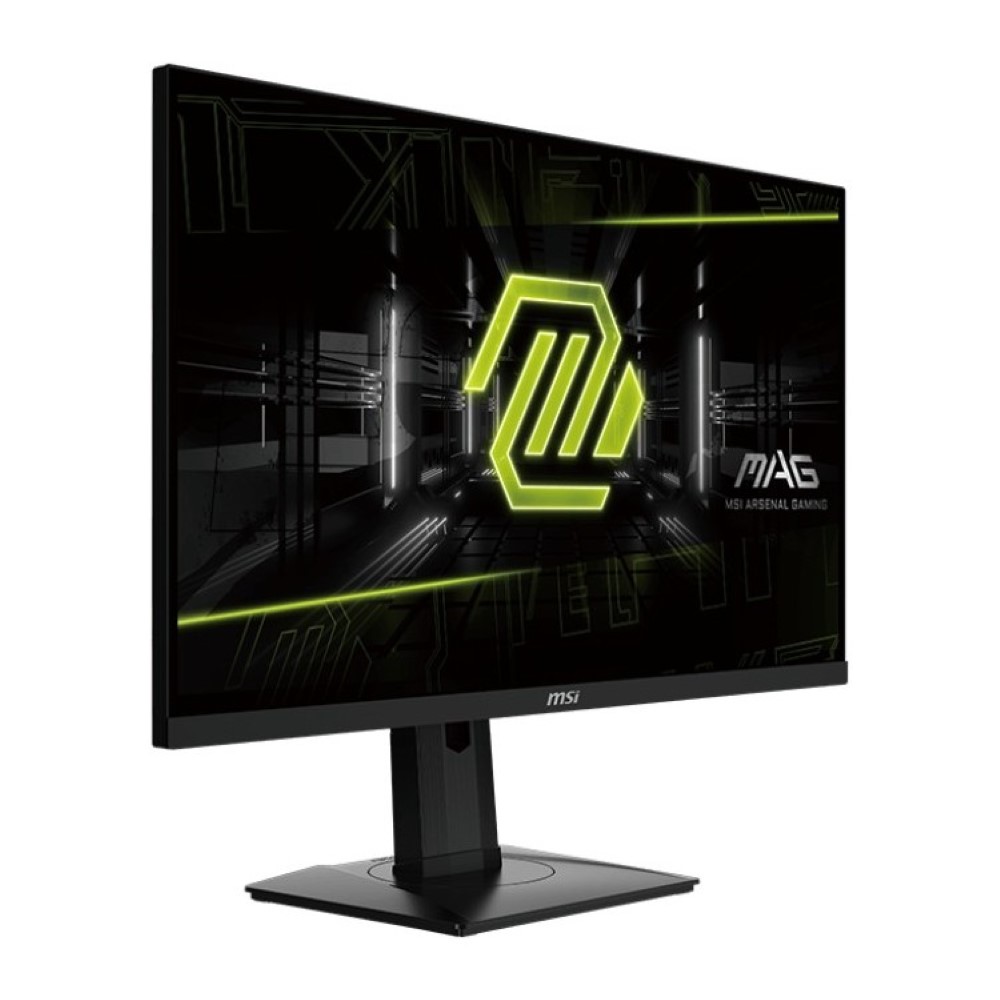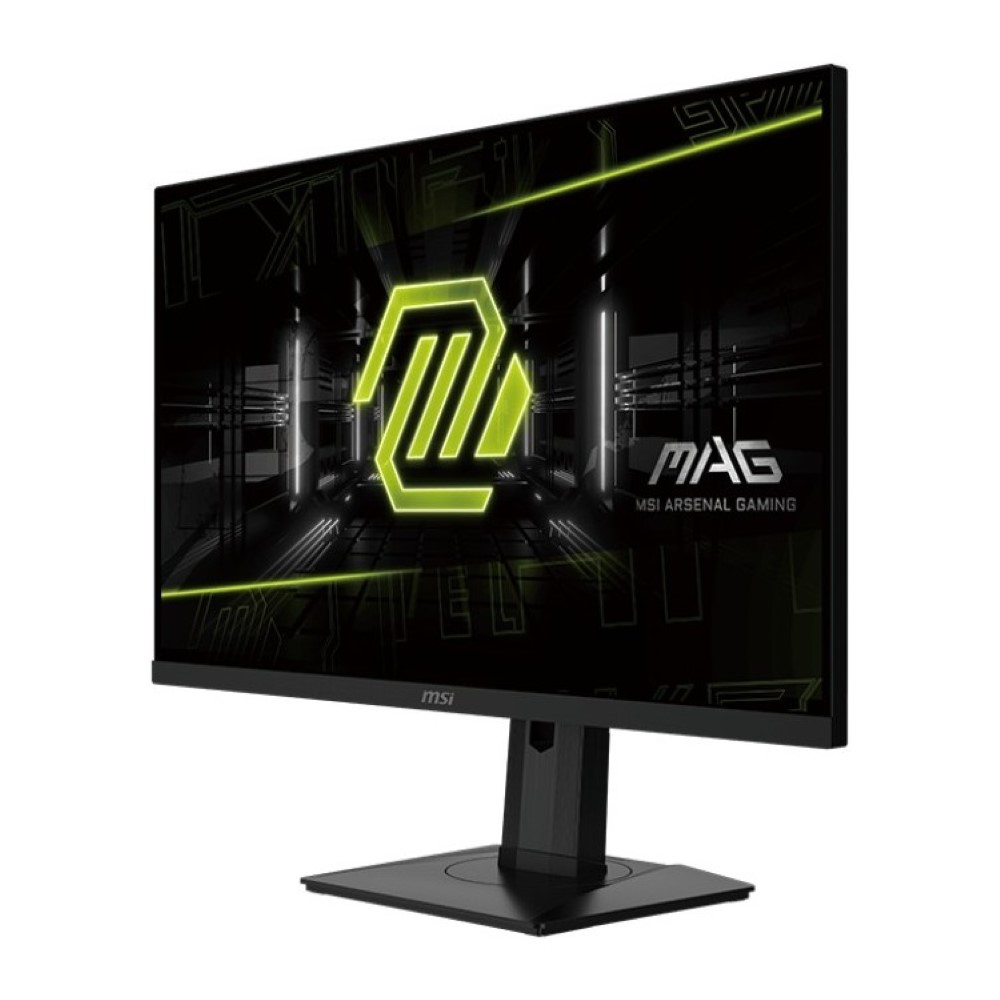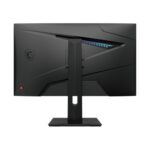MSI Optix MAG274QRF-QD 27″ WQHD 2560 x 1440 (2K) 1ms (GTG) 165 Hz 2 x HDMI, DisplayPort, USB-C NVIDIA G-Sync Compatible with Quantum Dot Technology Gaming Monitor Price in Pakistan
| Brand
Name of the company-manufacturer. |
MSI |
| Series
Name of the series, which the model belongs to. |
MAG |
| Model
Designation of the model. |
Optix MAG274QRF-QD |
| Model year
The year in which this model was announced. |
2020 |
Display
Information about the main characteristics of the display – panel, backlight, resolution, refresh rate, etc.
| Size class
Size class of the display as declared by the manufacturer. Often this is the rounded value of the actual size of the diagonal in inches. |
27 in (inches) |
| Diagonal
Approximate diagonal size of the display. If the manufacturer does not provide such information, the diagonal is calculated from the width and height of the screen. |
685.8 mm (millimeters) 68.58 cm (centimeters) 27 in (inches) 2.25 ft (feet) |
| Width
Approximate width of the display. If the manufacturer does not provide such information, the width is calculated from the diagonal and the aspect ratio. |
597.73 mm (millimeters) 59.773 cm (centimeters) 23.5327 in (inches) 1.9611 ft (feet) |
| Height
Approximate height of the display. If the manufacturer does not provide such information, the height is calculated from the diagonal and the aspect ratio. |
336.22 mm (millimeters) 33.622 cm (centimeters) 13.237 in (inches) 1.1031 ft (feet) |
| Panel manufacturer
Name of the manufacturer of the display panel. |
AU Optronics |
| Panel model
Information about the model of the panel used. |
M270DAN08.2 |
| Panel type
There are various panel technologies. Each has its own specific features – viewing angles, color reproduction, response time, brightness/contrast, production cost, etc. The image quality depends directly on the type of the display panel used. |
IPS |
| Panel bit depth
The most widely used panels are those with 6, 8, and 10 bits for each of the RGB components of the pixel. They provide 18-, 24-, and 30-bit color, respectively. |
8 bits |
| FRC
Frame Rate Control (FRC) is a method, which allows the pixels to show more color tones. With quick cyclic switching between different color tones, an illusion for a new intermediate color tone is created. For example, by using FRC, a 6-bit display panel is able to show 16.7 millioin colors, which are typical for 8-bit display panels, and not the standard 262200 colors, instead. There are different FRC algorithms. |
No |
| Colors
The maximum number of colors, which the display is able to reproduce, depends on the type of the panel in use and color enhancing technologies like FRC. |
16777216 colors 24 bits |
| Aspect ratio
The ratio between the horizontal and the vertical side of the display. Some of the standard and widely used aspect ratios are 4:3, 5:4, 16:9 and 16:10. |
1.778:1 16:9 |
| Resolution
Information about the number of pixels on the horizontal and vertical side of the screen. A higher resolution allows the display of a more detailed and of higher quality image. |
2560 x 1440 pixels Quad HD (QHD) / 1440p |
| Pixel pitch
The pixel pitch shows the distance from the centers of two neighboring pixels. In displays, which have a native resolution (the TFT ones, for example), the pixel pitch depends on the resolution and the size of the screen. |
0.233 mm (millimeters) 0.0233 cm (centimeters) 0.0092 in (inches) 0.0008 ft (feet) |
| Pixel density
Information of the number of pixels in a unit of length. With the decrease of the display size and the increase of its resolution, the pixel density increases. |
108 ppi (pixels per inch) 42 ppcm (pixels per centimeter) |
| Backlight
The backlight is the source of light of the LCD display panels. The type of backlight determines the image quality and the color space of the display. There are various backlights such as CCFL, LED, WLED, RGB-LED, and etc. |
W-LED |
| sRGB
sRGB is a color space, developed jointly by Hewlett-Packard and Microsoft in 1996. It is used in different devices such as printers, displays, TV sets, cameras, etc. The sRGB color space covers about 72% of the NTSC color space. |
147 % (percent) |
| Adobe RGB (1998)
Adobe RGB (1998) is a color space, developed by Adobe Systems in 1998. It has a wider gamut than the sRGB (mainly in the cyan-green range of colors) and is widely used in professional printing. |
100 % (percent) |
| DCI P3
DCI P3 is a color space, introduced in 2007 by the SMPTE. It is used in digital cinema and has a much wider gamut than the sRGB. |
97 % (percent) |
| Brightness
Information about the brightness of the screen. It is measured in candela per square metre (cd/m²). |
300 cd/m² (candela per square meter) |
| Peak brightness
Often even a higher peak luminance can be achieved under certain conditions. For example, when a smaller area/APL of the display is used for showing a bright object, when a bright object is displayed for a short time, etc. |
390 cd/m² (candela per square meter) |
| Static contrast
The static contrast shows the ratio between the brightest and the darkest color, which the display can reproduce simultaneously, for example, within one and the same frame/scene. |
1200 : 1 |
| Dynamic contrast
The dynamic contrast shows the ratio between the brightest and the darkest color, which the display can reproduce over time, for example, in the course of playing a video. |
100000000 : 1 |
| Horizontal viewing angle
Information about the maximum horizontal viewing angle, within which the image on the screen is of acceptable quality. |
178 ° (degrees) |
| Vertical viewing angle
Information about the maximum vertical viewing angle, within which the image on the screen is of acceptable quality. |
178 ° (degrees) |
| Minimum response time
Information about the minimum amount of time, in which the pixels change from one color to another. Very often the manufacturer provides the response time for transition from grey-to-grey (G2G). |
3.4 ms (milliseconds) 0.0034 s (seconds) |
| Average response time
Information about the average amount of time, in which the pixels change from one color to another. |
6 ms (milliseconds) 0.0060 s (seconds) |
| Input lag
Desktop monitors and smart TVs experience a latency/lag in visualizing the information. The time in milliseconds that the display needs to visualize the signal input. |
9 ms (milliseconds) 0.0090 s (seconds) |
| Coating
Information about the type of coating of the display. There are different types of matte and glossy coatings, each of which has its own advantages and drawbacks. |
Anti-glare/Matte |
| 8-bit+FRC supported at different resolutions and refresh rates |
3D
3D displays use various technologies to achieve a 3D effect. Each of these technologies has its own advantages and drawbacks.
| 3D
Information on whether 3D is supported or not. |
No |
Frequencies
Information about the horizontal and vertical refresh rates/frequencies.
| Horizontal frequency (digital)
The horizontal scan rate/frequency shows the number of horizontal lines, displayed by the monitor per second, when it is plugged to a digital source. |
90.9 kHz – 242.4 kHz (kilohertz) |
| Vertical frequency (digital)
The vertical frequency/refresh rate shows how many times in a second the image on the screen is refreshed. |
30 Hz – 165 Hz (hertz) |
| DisplayPort – 30 Hz – 165 Hz Type-C (DP) – 30 Hz – 165 Hz HDMI – 30 Hz – 144 Hz |
Power supply and consumption
Information about the power supply and consumption, energy efficiency class, etc.
| 110V
Permissible voltage tolerance in a 110-volt electric system. |
100 V – 120 V (volts) |
| 220V
Permissible voltage tolerance in a 220-volt electric system. |
220 V – 240 V (volts) |
| Alternating current frequency
Requirement regarding the alternating current frequency in the electric system. |
50 Hz – 60 Hz (hertz) |
| Electric current (A)
Requirement regarding the electric current rating in amperes (A) of the electric system. |
3.42 A (amperes) |
| Power consumption (average)
Average power consumption in standard work mode. |
32 W (watts) |
Dimensions, weight and color
Information about the dimensions and the weight of the specific model with and without stand as well as the colors, in which it is offered to the market.
| Width with stand
Width with stand in different measurement units. |
614.9 mm (millimeters) 61.49 cm (centimeters) 24.2087 in (inches) 2.0174 ft (feet) |
| Height with stand
Height with stand in different measurement units. |
532.7 mm (millimeters) 53.27 cm (centimeters) 20.9724 in (inches) 1.7477 ft (feet) |
| Depth with stand
Depth with stand in different measurement units. |
206.7 mm (millimeters) 20.67 cm (centimeters) 8.1378 in (inches) 0.6781 ft (feet) |
| Weight with stand
Weight with stand in different measurement units. |
6.05 kg (kilograms) 13.34 lbs (pounds) |
| Box width
Width of the package in different measurement units. |
730 mm (millimeters) 73 cm (centimeters) 28.7402 in (inches) 2.395 ft (feet) |
| Box height
Height of the package in different measurement units. |
490 mm (millimeters) 49 cm (centimeters) 19.2913 in (inches) 1.6076 ft (feet) |
| Box depth
Depth of the package in different measurement units. |
220 mm (millimeters) 22 cm (centimeters) 8.6614 in (inches) 0.7218 ft (feet) |
| Box weight
Weight of the product with all accessories and packaging in different measurement units. |
8.7 kg (kilograms) 19.18 lbs (pounds) |
| Colors
Information about the colors, in which the specific model is offered to the market. |
Black |
Ergonomics
Information about the ergonomic functions – height adjustment, swivel angles, tilt angles, etc.
| VESA mount
Information about whether there is a possibility for wall mounting according to the VESA Mounting Interface Standard (MIS). |
Yes |
| VESA interface
There are many various interfaces under the VESA standard, which differ in the size of the brackets, the distances between the screw holes and their number. |
100 x 100 mm |
| Removable stand
Information about whether the stand can be dismounted. Usually, this is required for wall mounting. |
Yes |
| Height adjustment
Information about whether the stand allows height adjustment. |
Yes |
| Height adjustment range
Information about the extent to which the stand allows the height to be adjusted. |
100 mm (millimeters) 10 cm (centimeters) 3.937 in (inches) 0.3281 ft (feet) |
| Landscape/portrait pivot
Some displays have the ability to operate in landscape and portrait mode alike. |
Yes |
| Left pivot
Degree of pivoting the display counterclockwise. |
90 ° (degrees) |
| Right pivot
Degree of pivoting the display clockwise. |
90 ° (degrees) |
| Left/right swivel
Information whether the display can be swiveled around the stand axis. |
Yes |
| Left swivel
Maximum swivel degree of the display to the left of the stand axis. |
75 ° (degrees) |
| Right swivel
Maximum swivel degree of the display to the right of the stand axis. |
75 ° (degrees) |
| Forward/backward tilt
Most displays have the ability to be tilted forward and backward as to provide a more comfortable viewing position for the user. |
Yes |
| Forward tilt
Maximum degree of forward tilting of the display. |
5 ° (degrees) |
| Backward tilt
Maximum degree of backward tilting of the display. |
20 ° (degrees) |
Camera
Many contemporary desktop monitors and smart TV sets have built-in cameras.
| Camera
Information whether the current model has a built-in camera or not. |
No |
Connectivity
Available connectivity ports, slots and interfaces.
| Connectivity
Information about the available connectivity ports, slots and interfaces such as USB, infrared port, SD card slot, audio/video and network interfaces, etc. |
1 x USB (Type-C; DP Alt Mode) 1 x USB 2.0 (Type-B; upstream) 2 x USB 2.0 (Type-A; downstream) 2 x HDMI 2.0 (b) 1 x DisplayPort 1.2 (a) 1 x 3.5 mm Audio Out |
| USB Type-C Power Delivery – 5V/3A (0-69%); 5V/2A (70-80%); 5V/1A (81-100%) |
Features
Some additional functional features of the model.
| Features
Information about additional software features, technologies, functions and services of the model. |
5-way OSD navigation joystick AMD FreeSync Premium Flicker-free technology Game Mode Gaming OSD App HDR Ready Low Blue Light Mystic Light Night Vision NVIDIA G-Sync Compatible Rapid IPS Wide Color Gamut |
Operating and storage conditions
There are certain requirements for the environmental conditions, in which the display should be used and stored in order to function properly.
| Operating temperature
The operating temperature shows the safe temperature range (from minimum to maximum), within which the display will function flawlessly. Outside this range it might operate improperly and/or fail entirely. |
10 °C – 40 °C (degrees Celsius) 50 °F – 104 °F (degrees Fahrenheit) |
| Operating humidity
The operating humidity shows the acceptable level of humidity, in which the display will function flawlessly. It sets a lower and an upper humidity level for safe operation and is measured in percentage. |
20 % – 90 % (percent) |
| Operating altitude
The operating altitude shows the maximum admissible altitude, at which the display will function flawlessly. Above this level it might not operate properly and/or might seize to function. |
5000 m (meters) 16404.2 ft (feet) |
| Storage temperature
The storage temperature shows the range from a minimum to a maximum temperature, within which storing of the display is considered to be safe. |
-20 °C – 60 °C (degrees Celsius) -4 °F – 140 °F (degrees Fahrenheit) |
| Storage humidity
The storage humidity shows the lower and upper humidity limit, which ensures safe storage of the display. Storing it outside these limits might damage the display. |
10 % – 90 % (percent) |

Looking for the best 18.5-inch, 19-inch, 20-inch 22-inch, 23-inch 24-inch, 25-inch, 27-inch, 28-inch, 30-inch, 32-inch, 34-inch, 35-inch, 38-inch, 40-inch, 42-inch, 43-inch, 45-inch, 48-inch, 49-inch, 55-inch monitors in Pakistan? Discover a wide selection of LCD, LED, OLED, QLED, ultrawide, super ultrawide and gaming monitors at affordable prices. Find top brands like Dell (Dell S series, Dell Pro series, Alienware), HP (Elite Display, Bang & Olufsen, Pro Display, Pavilion, Omen), Samsung (Odyssey, Odyssey ARK, Viewfinity), LG (Ultrafine, Ultragear), Asus (TUF Gaming, ROG Strix, ROG Swift, Pro Art), Gigabyte (Aorus), AOC, HKC, Corsair, ViewSonic, Twisted Mind, Thunder, Acer, Benq, Lenovo, MSI, Ease, Gigabyte and more. Choose from flat or curved screen options with VA or IPS panel types. Response times range from 5ms up to ultra-fast 0.1ms for smooth gameplay. We also offer low blue light technology monitors that reduce eye strain during extended use. Whether you need a compact 22-inch monitor or a large 55-inch monitor for immersive gaming or professional work, we’ve got you covered. Choose from a range of resolutions including FHD (1080P), QHD (2K / 1440p), 4K (UHD / 2160P), 5k and experience stunning visuals. We also offer Built-in Speakers, Smart Monitor, color accuracy Z Display Ultrasharp, VRR, 10 Bit, Adobe RGB, HDR, SRGB, DC IP3 monitors for professionals, Graphic Designer, Video Editor, 3D Artist who require precise color reproduction and exceptional image quality. Find monitors with refresh rates ranging from 60Hz, 75hz, 100hz, 120hz, 144hz, 165hz, 170hz, 180hz, 200hz, 240hz, 280hz, 360Hz, perfect for smooth and fluid gaming experiences. Models with HDMI 2.1, Display Port 1.2, Display Port 1.4 and USB Type-C (Thunderbolt) connectivity also available. We stock business / office monitors as well as models supporting G-Sync, FreeSync, G-Sync Certified and FreeSync Premium for a seamless gaming experience. Check out our selection of monitors and enhance your viewing experience today. We also offer budget-friendly options including used monitors and open box monitors.

 Action Cameras
Action Cameras Video Camera
Video Camera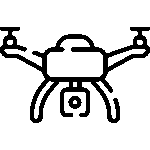 Drones
Drones Gimbals
Gimbals Microphone
Microphone DRLR & Mirrorless
DRLR & Mirrorless Tripods
Tripods
 All In One
All In One Desktop Computers
Desktop Computers Mac Mini
Mac Mini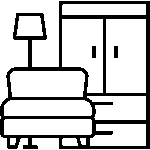

 Projectors
Projectors

 Tablets
Tablets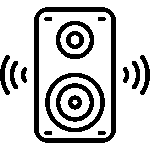 Speakers
Speakers
